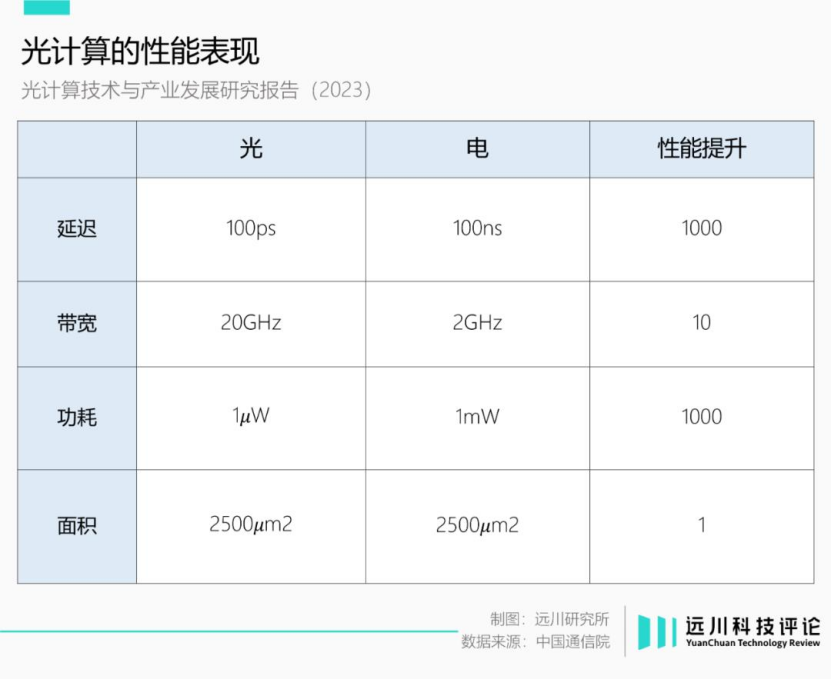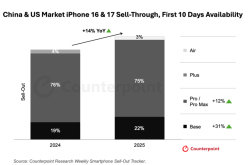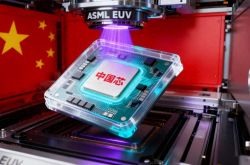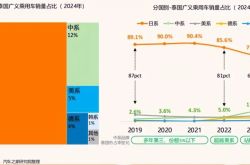Optical Computing: Poised for Commercial Breakthroughs, Yet Implementation Still Awaits
![]() 04/14 2025
04/14 2025
![]() 502
502
Preface:
Despite the potential reduction in computing power costs highlighted by the surge in popularity of DeepSeek, technology giants remain steadfast in their investments in AI computing capabilities.
Currently, optical computing technology is gradually transitioning from the confines of the laboratory to the bustling market, heralding its own "Roadster moment".
Author | Fang Wensan
Image Source | Network
Optical Computing's "Roadster Moment"
In essence, optical computing employs optical signals for data processing and computation. Compared to traditional electronic computing, optical computing boasts remarkable advantages such as high speed, low energy consumption, and robust parallel processing capabilities.
In this era of exponential data growth, traditional electronic computing grapples with issues like excessive energy consumption and computational speed bottlenecks. Optical computing, on the other hand, is seen as the linchpin technology poised to overcome these hurdles.
At the market level, an increasing number of enterprises are venturing into the realm of optical computing, and the influx of capital has imbued the technology's commercialization with significant momentum. Globally, venture capital firms, governments, startups, and universities have collaboratively propelled the commercialization of this industry forward.
In 2019, the U.S. Defense Advanced Research Projects Agency (DARPA) launched the LUMOS project, aimed at developing integrated photonic chips with deep learning capabilities, high computing power, and low power consumption. The EU's "Horizon 2020" program funded the establishment of PhotonHub Europe, accelerating the adoption and deployment of photonic technology in European industries through a one-stop photonic innovation center offering comprehensive services.
Furthermore, the EU supports the development of photonic technology through annual strategic plans like the Joint Undertaking on Electronic Components and Systems. In the Netherlands, in April 2022, the Dutch government invested 1.1 billion euros in the photonic integrated circuit industry, collaborating with private enterprises to accelerate research on photonic chip technology innovation through national funds.

Foreign Enterprise Technology Leadership and Diverse Development
Cerebras Systems: As a leading enterprise in optical computing, Cerebras Systems has unveiled the world's largest wafer-scale optical computing chip. Focused on optical computing applications in artificial intelligence, the company's chip offers unprecedented computational density, showcasing significant advantages in processing large-scale deep learning models.
Through collaborations with scientific research institutions and enterprises, Cerebras Systems has explored applications across various fields, including drug development and climate simulation, achieving notable results.
Xilinx: While not a pure optical computing enterprise, Xilinx has significantly contributed to the integration of optical computing and traditional digital computing. Its adaptive computing acceleration platform integrates optical interconnection technology, substantially enhancing data transmission speed and reducing system latency.
This technology holds vast potential in data centers, 5G communications, and other domains, providing a viable solution for integrating optical computing technology into existing computing architectures.
IBM: With a long-standing commitment to research in cutting-edge computing technologies, IBM boasts deep technical expertise in optical computing. IBM's research focuses on developing novel optical storage and optical logic devices, and its research on optical qubit storage technology has achieved pivotal breakthroughs, laying the groundwork for the future evolution of optical quantum computing.
Concurrently, IBM is actively involved in formulating industry standards, fostering the standardization and industrialization of optical computing technology.
Domestic enterprises are also swiftly catching up with distinctive innovations
PhotonAI: As the first domestic photonic computing chip company and the pioneering national high-tech enterprise in optical computing, PhotonAI is dedicated to the research and development of photonic AI computing chips. Based on silicon-based photonic integration technology, its chips exhibit high computing power, low power consumption, and minimal latency. The core product is a photoelectric fusion AI acceleration computing card tailored for the server market, suitable for application in data centers and enterprise computer rooms.
Light-Based Technology: Established in 2022, the company has witnessed rapid growth. During the 2024 World Artificial Intelligence Conference, it announced the successful tape-out of its first optical computing chip, with both computing density and accuracy meeting commercial standards and peak computing power exceeding the 1000 TOPS threshold. Currently, it is debugging a 128x128 optical computing board and anticipates launching commercial optical computing board products within 2025.
Turing Quantum: Founded in February 2021, Turing Quantum is the first domestic optical quantum computing company. Leveraging lithium niobate thin film (LNOI) photonic chips and femtosecond laser direct writing technology, it develops optical quantum chips capable of integrating large-scale photonic circuits, dedicated to fostering the commercial application of optical quantum computing.
Deepening Integration of Optical Computing and Artificial Intelligence
With the rapid advancement of artificial intelligence technology, the demand for computing power continues to escalate. The high-speed parallel computing capabilities of optical computing are highly aligned with the requirements of AI algorithms, and the integration of the two is set to become increasingly seamless in the future.
On one hand, optical computing chips will emerge as a pivotal hardware support for AI computing, enhancing the training and inference speed of deep learning models. On the other hand, AI algorithms will aid in optimizing optical computing systems, achieving more efficient optical signal processing and computation.
To fully harness the advantages of optical computing, innovation in optical computing system architecture is paramount. In the future, more system architectures specifically tailored to the characteristics of optical computing will emerge, such as novel optical interconnection architectures and hybrid optical-electronic computing architectures.
These innovative architectures will refine data transmission and processing workflows within optical computing systems, improving overall system performance and bolstering the adaptability and practicality of optical computing technology across diverse application scenarios.
Implementation Still Requires Time
While optical computing technology has made considerable strides, it still confronts numerous challenges en route to large-scale implementation.
From a technical standpoint, optical computing technology grapples with unresolved issues. For instance, precise control and processing of optical signals remain challenging, and the stability and reliability of optical devices necessitate further improvement.
Moreover, integrating optical computing with existing electronic computing systems poses technical hurdles, and achieving efficient data interaction and collaborative work between the two represents a key challenge that must be overcome.
Regarding cost, the manufacturing expenses of optical computing equipment are high. The production process of optical computing chips and core optical devices is intricate, necessitating high-precision manufacturing equipment and technology, which translates into elevated costs.
The high cost impedes the widespread adoption of optical computing technology in cost-sensitive application domains, and cost reduction is crucial for achieving large-scale commercialization.
The nascent market ecosystem also presents a significant barrier to the implementation of optical computing. Currently, relevant standards and norms for optical computing technology are not yet unified, and a mature industrial chain is lacking.
In terms of the software ecosystem, there is a relative dearth of programming languages and development tools tailored for optical computing, complicating the development and promotion of optical computing applications. Building a comprehensive optical computing market ecosystem necessitates the concerted efforts of governments, enterprises, research institutions, and other stakeholders.
Conclusion:
Although optical computing technology has embarked on its "Roadster moment" of commercial breakthroughs, with domestic and foreign enterprises actively propelling its development, there is still a considerable journey ahead in terms of technological advancement, cost reduction, and market ecosystem development.
Nevertheless, with continuous technological advancements and gradual industrial maturation, optical computing is anticipated to emerge as a pivotal force driving the digital transformation of various industries in the foreseeable future.
Content references: Kunming Artificial Intelligence Computing Center: Optical Computing: The Race for the Peak of Computing Power; Yuanchuan Technology Review: New Variables in the Computing Power Market: Optical Computing Ushers in the "Roadster Moment"; China Academy of Information and Communications Technology: "Research Report on Optical Computing Technology and Industrial Development (2023)"








